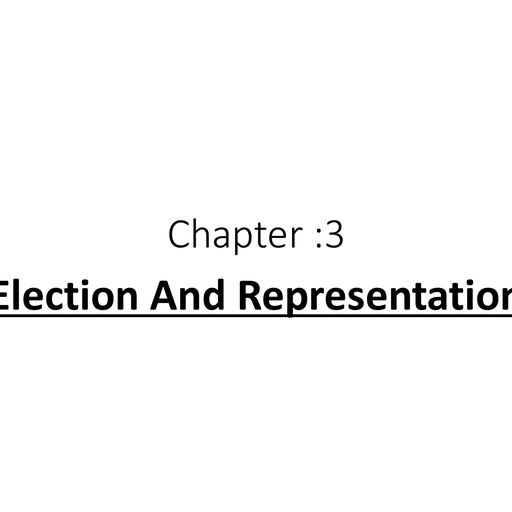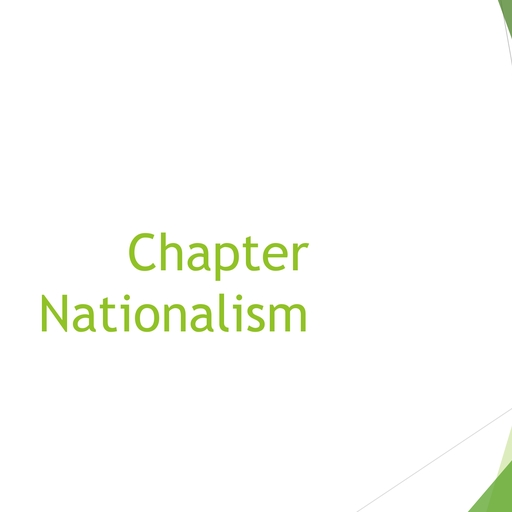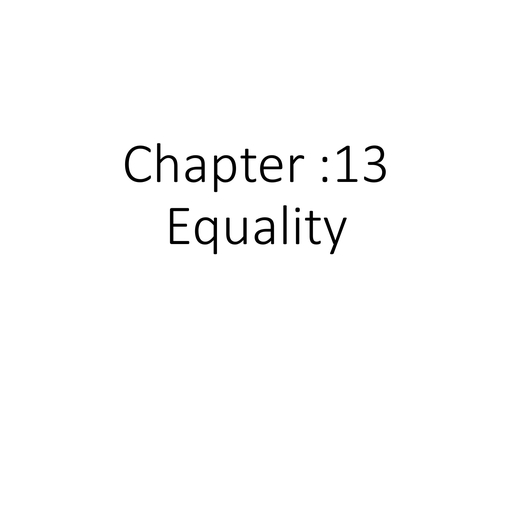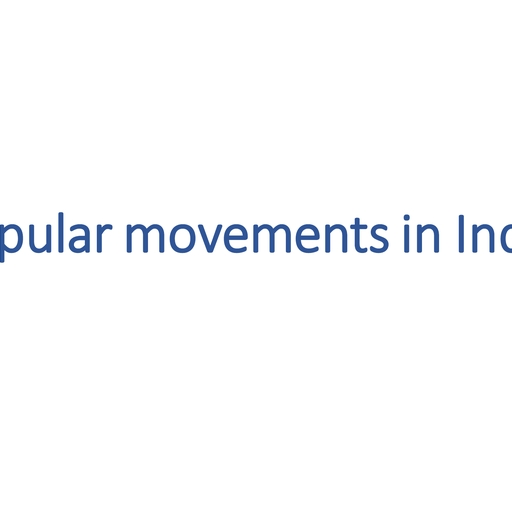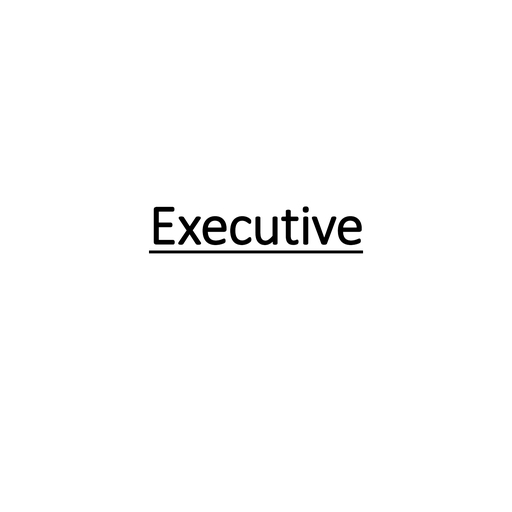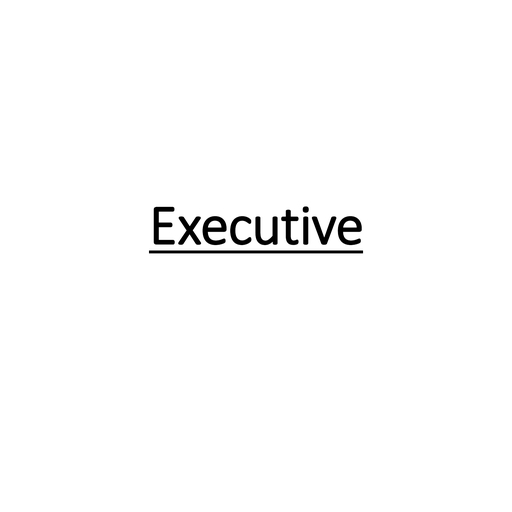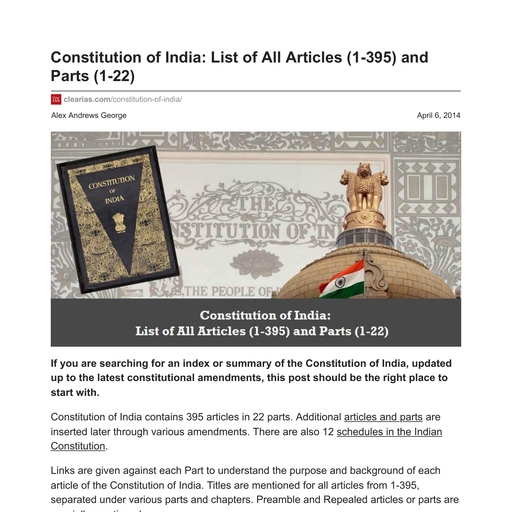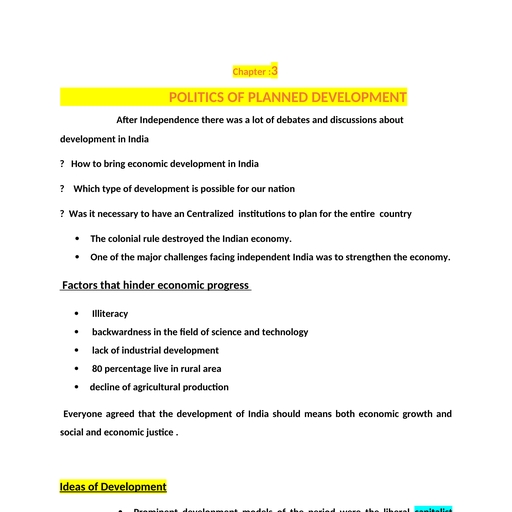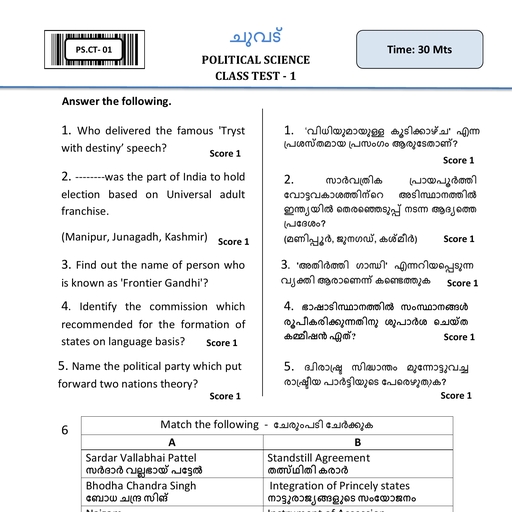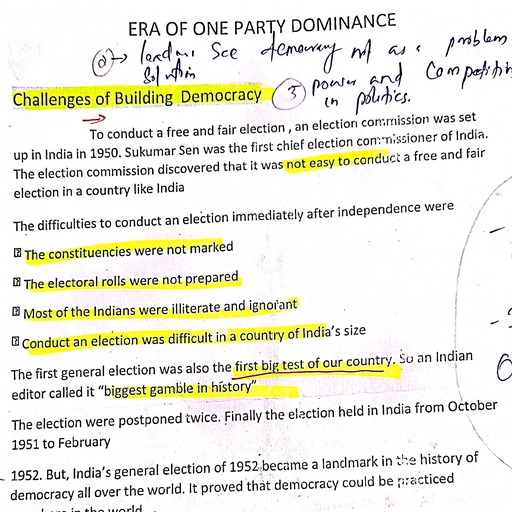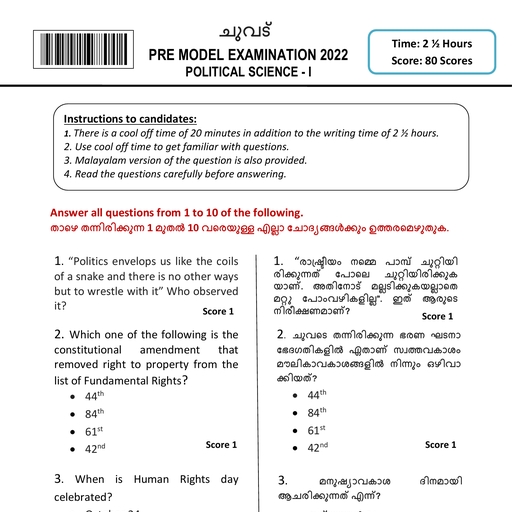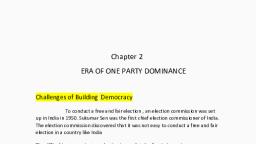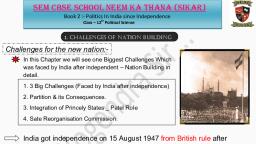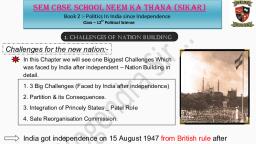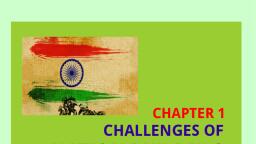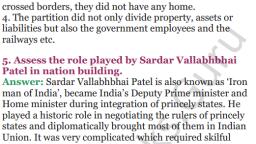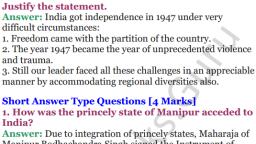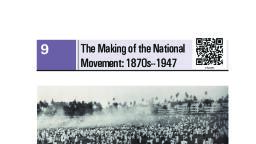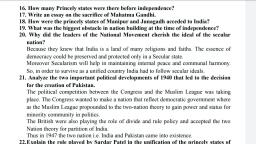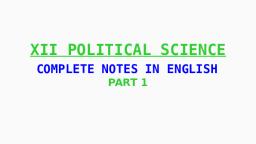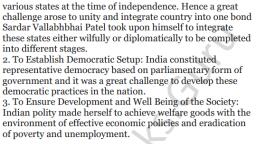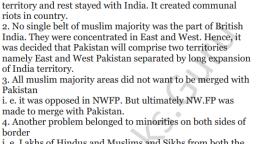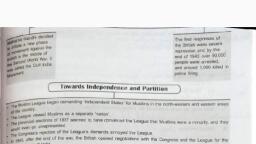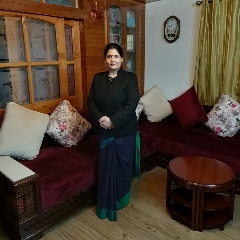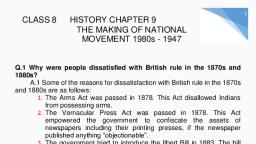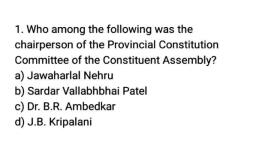Page 1 :
FAISAL K.P,, HSST Political Science, MKHMMOHSs, Manassery, Mukkam, Kozhikode Dt., , Chapter:1, , , , TRYST WITH DESTINY, eT WITH DESTINY, , ‘Tryst with Destiny’ is the famous speech delivered by, Jawaharlal Nehru, the first Prime Minister of India at a special session of the, Constituent Assembly, which was held at midnight on 14 August 1947., , Through this speech, Nehru, , to dedicate themselves to serve the nation., , CHALLENGES FACED BY INDEPENDENT INDIA, SE REY BY INDEPENDENT INDIA, , India was born in very difficult circumstances. Independent, , India faced multiple challenges. Broadly, India faced three kinds of, , challenges., , 1. Nation Building -(how to shape a nation), , The first challenge that independent India faced was to, , ‘make India a nation . The country's large size and high population have, , complicated the nation- building process., 2. The Establishment of Democracy — (How to establish democracy ), hed 2quAe, "Making of the Constitution d training of citizens in democratic of oli fre, a , (ce Le , gh mee Bictese|, , _ Process was another task before independent India., , 3. Social and Economic Development - (assurance to the backward people)
Page 2 :
Another major challenge was ens, The leaders of independent India have devi, , , , After 1947, NATION BUILDING, , Partition: The TWo-Nation Theory, , The idea of two nation theory is introduced by Muhammad Ali Jinnah, , This theory demanded separate nation for Muslims that is Pakistan, , The Muslim League put forward the demand for a separate, , , , , , between Congress and Muslim League and the support of the British to the, two-nation theory led to the creation of Pakistan., , Reason for Partition, , S Divide and rule policy of British govt, , India’s wideness, a The wish of congress and Muslim league two power blocs, , PROCESS OF PARTITION, , After independent India was divided in to two Countries(India & Pakistan) such, division was not only very painful but also very difficult to decide and to, , implement., , _—
Page 3 :
It was divided on the basis of the principles of religious majority. these, basically means that the area were the Muslims were in majority would make, , up the territory of Pakistan. The rest was to stay with India., , The idea was very simple but it presented all kinds of difficulties, , Major difficulties faced during the time of Partition, , 1. There was no single belt of Muslim majority area in British India, , India., 2. Not all Muslim majority areas wanted to be in Pakistan. Leaders like, , Khan Abdul Gaffer Khan, popularly known as the Frontier Gandhi,, , strongly opposed the two- nation theory. But ignoring such objections,, , British India was divided., , 3. Punjab and Bengal, the two Muslim-dominated provinces of British, India, also had non-Muslim majority areas. The problem was solved by, dividing the two provinces and giving the non-Muslim majority areas to, , India., 4. Another major problem related to the partition was the issue of, , minorities in the border areas. Many people belong to the minority, , communities in India and Pakistan became the targets of attack., , The consequences of partition, Partition doesn’t mean just division Of the country the administration or, , asset and liabilities or again The railways and roads.
Page 4 :
Hindy Muslin Canftief, , - Between 5 and 10 million people were killed on both countries in the, , name of religion., , - More than eight million people of minority communities were compelled, , - Millions of people are forced to live in refugee camps., , is Hindu and Muslim ‘communal zones’ were created in cities like Lahore,, , Amritsar and Kolkata., , - Many women have been sexually assaulted. _, , - Other challenges women faced were forced marriages and conversions., - Many women were killed by their own family members to preserve the, ‘family - honor’., , - Many children were separated from their parents, , -Collapse of Indian administration and economy, , -destroy the unity and integrity of India., , -the problem of displacement and rehabilitation., , INTEGRATION OF PRINCELY STATES, , India under British was divided in to British Indian province and Princely stats., The British Indian Province were directly ruled by British Govt. But the Princely, states were ruled by the princes, who control over the internal affairs of the, provinces provide the accepted the British supremacy.
Page 5 :
The Problem, There were 565 princely states in British India. After the end, of the British rule, the princely states were free to join either in India or in, , Pakistan or to remain independent., , The Indian govt took a firm stand against the possible division of, India in to small provinces. Deputy Prime minister, home minister Sardar Patel, negotiate with princely states. Govt approach was guided by three, , considerations., The following are three points that have influenced the, , Indian government in its dealings with the integration of princely states., - The people who were part of the princely states wanted to join India., - India was ready to grant autonomy to certain areas., - The Government of India wanted to resolve the integration of the, princely states urgently in the backdrop of the problems associated, with the partition of India., But some princely states is not ready to join with India. They are, 1,junagadh, 2. Hyderabad,, 3. Manipur,, , 4. Jammu and Kashmir, , 5. Travancore The first announcement was done by Maharaja of, , Travancore. ., , Junagadh, , The King of Junagadh wanted to join with Pakistan. But the people, wanted to join Indian union. The people decided to join India was proved right

